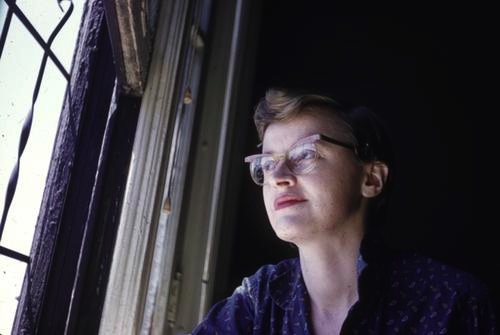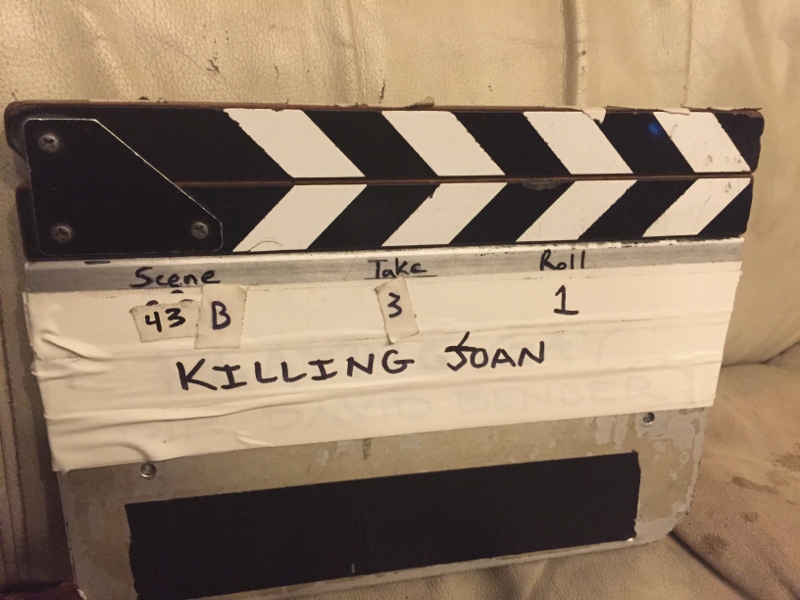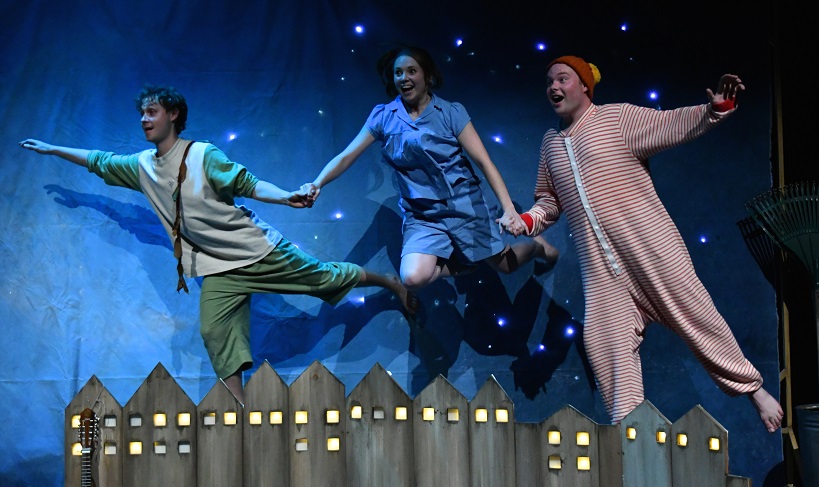Musicians can be strange, unpredictable, other-worldly creatures, completely wrapped up in the mysteries of their art. So it shouldn’t come as a surprise that they have a habit of going missing. This can range from a prolonged period of radio silence, away from the spotlight – think Brian Wilson, Kate Bush or Scott Walker – to almost total disappearance. The exact fate or whereabouts of Bill Fay or Vashti Bunyan were unknown until relatively recently, and the same went for esteemed Scottish folk singer Shelagh McDonald, who had, it turned out, been living in a tent since 1981. At the far end of this scale there are final, and most likely tragic, vanishing acts, such as Richey Edwards of the Manic Street Preachers. And long before that, in 1974, there was Elizabeth ‘Connie’ Converse.
Originally from New Hampshire, Connie Converse moved to New York in 1949 and spent the next decade trying to establish herself as a singer/songwriter. She won many admirers but didn’t find much success. One champion was folk star Susan Reed, who recorded one of her Connie’s songs, the gorgeous Sun Go Down. But recording contracts and album deals weren’t forthcoming and, by 1960, Connie had given up hope. She went to live near her brother Phil in Michigan and found a job as the managing editor of an academic journal. Dogged by depression, in August 1974, just after her 50th birthday, Connie left a series of farewell letters for her friends and family, packed up her Volkswagen Beetle, and drove away. She was never heard of again and to this day no-one knows exactly what became of her.
The finer details of her private life remain a mystery, but her songs often reflected upon it. For a strong, principled, single woman to be writing about her experiences was highly unusual at that time. Her music was smart, intimate, sometimes funny, often hauntingly lonely: quite unlike the standard sound of the Greenwich Village folk scene which, ironically, spawned several big stars soon after Connie moved away.
 In a roundabout way, though, Connie’s music managed to survive. Recordings had been made by friends, and by Connie herself – some so very low-fi that her cat can be heard miaowing in the background. Back in the 50s, such rough-and-ready material would never have been released, but it sounds almost vogueishly contemporary today. It would feel entirely natural to hear Connie’s songs at a festival like Green Man or End of the Road.
In a roundabout way, though, Connie’s music managed to survive. Recordings had been made by friends, and by Connie herself – some so very low-fi that her cat can be heard miaowing in the background. Back in the 50s, such rough-and-ready material would never have been released, but it sounds almost vogueishly contemporary today. It would feel entirely natural to hear Connie’s songs at a festival like Green Man or End of the Road.
In 2004, New York DJ David Garland was alerted to Connie’s music by one of his guests, her old friend and supporter, animator Gene Deitch. Garland played Deitch’s old tapes on air, and this had a powerful knock-on effect. Garland was inspired to make a radio documentary about Connie’s story, and two of his listeners sourced her original private tapes to release the first-ever album of her songs, How Sad, How Lovely, in 2009. Slowly but surely, the word began to spread.
Now Andrea Kannes, a media studies student from New York, has made a 40-minute documentary film about Connie entitled We Lived Alone as her graduation thesis. It’s just starting to receive wider public exposure. Kannes explains: “I first became aware of Connie’s music in the fall of 2009 when I was just about to graduate from NYU. I was alone in my dorm room browsing the internet and stumbled across a post with a Myspace link to a few of her songs on my professor, Bryan Waterman’s, shared blog called History of New York. I think I skimmed the post, not really gathering many details, but I did follow the link to her songs. The first one that I listened to was Father Neptune. I was blown away. I think I listened to it over and over and it resonated with me so deeply that I felt I knew exactly what circumstances could have motivated her to write this song.”
Kannes was inspired to do some more research into her new discovery. “The more I read, the more I felt like we were soul sisters across space and time. That sounds kind of ridiculous and exaggerated, but when you talk to other big admirers of Connie, they often have a similar response. The music stayed in very heavy rotation in my mind until mid-2010 when I finally definitively decided that I needed to do something about getting Connie the recognition she deserves. I felt strongly that more people needed to hear this music and learn about Connie’s unique personality and life story. She was an under-appreciated, unbelievably talented woman who was way ahead of her time.” 
When Kannes decided to try and tell this story herself, she first sent an email to Connie’s brother Phil to express her admiration and interest. He replied just two hours later. “He responded enthusiastically and within a few days I received a yellow booklet of lyrics called Connie’s Guitar Songs and a CD that he had made years earlier of her songs.”
A few months later, Kannes arranged to visit Phil and his wife at their home in Ann Arbor, to interview them and look through the filing cabinet they’d kept full of Connie’s papers and tapes. “That was an amazing experience. Phil and Jean are the sweetest, most intelligent, funniest people I’ve ever met. They even let me stay with them on my trip so I could spend as much time as possible combing through the filing cabinet when we weren’t filming. I slept under one of Connie’s paintings in their guest room.”
Six years later, the end result of Kannes’ work is a fittingly uncluttered, heartfelt film centred on interview footage with surviving family, friends and admirers. One particular sequence, of the landscape at Lonesome Lake in New Hampshire, set to Connie’s song Talkin’ Like You, is quite beautifully evocative. Connie’s is an extraordinary tale, part Nick Drake, part Emily Dickinson, and We Lived Alone is a charming insight into her life. It’s impressionistic rather than exhaustive – it was, after all, made on a shoestring budget, augmented further with Kickstarter funding – but it works very well, despite, or even because of, these restraints.
 There are still no concrete answers to the question of what happened to Connie after 1974 but, in the process of making the film, Kannes has developed some thoughts of her own on the subject. “Even her family admits that they were very much in the dark about certain areas of Connie’s life, and they were all pretty close. So I can’t even pretend to know her true intentions. I would like to think she had a simple, pleasant, fulfilling life somewhere else for a while before peacefully passing on in her sleep. However, after speaking with Phil, Jean, and their son Tim, who saw her just before she disappeared and who were on the receiving end of a few of her infamous goodbye notes, I think that she probably committed suicide pretty soon after she left. Either way, she definitely wanted her work to be shared, and that’s really what I’m trying to do.”
There are still no concrete answers to the question of what happened to Connie after 1974 but, in the process of making the film, Kannes has developed some thoughts of her own on the subject. “Even her family admits that they were very much in the dark about certain areas of Connie’s life, and they were all pretty close. So I can’t even pretend to know her true intentions. I would like to think she had a simple, pleasant, fulfilling life somewhere else for a while before peacefully passing on in her sleep. However, after speaking with Phil, Jean, and their son Tim, who saw her just before she disappeared and who were on the receiving end of a few of her infamous goodbye notes, I think that she probably committed suicide pretty soon after she left. Either way, she definitely wanted her work to be shared, and that’s really what I’m trying to do.”
Sheffield’s annual Sensoria festival of music and film runs until October 5. Today, under the banner Roving Women – itself a Connie Converse song title – singer/songwriter Nat Johnson will perform new arrangements of Connie’s tunes and the finished version of We Lived Alone will receive its public premiere, after which Kannes and Johnson will be present for a Q&A session. Already, Kannes feels some of her expectations for the film have been exceeded.
“Honestly, this film has already gone places I’ve never dreamed of, i.e. Sheffield! My main goal is for every person who discovers Connie’s music and wants to know more about her to be able to see it. I would also like to make it available somewhere for people to stumble upon, watch, and want to see more of her work. If it could play in a couple more festivals so that more people have the opportunity to know about her, that would be a dream.”
 What: Roving Women event at Sheffield’s Sensoria festival, including the world premiere of We Lived Alone
What: Roving Women event at Sheffield’s Sensoria festival, including the world premiere of We Lived Alone
Where: Cutlers Hall, Church St, Sheffield
When: October 1, 2014
More info: http://2014.sensoria.org.uk/events/roving-women/; http://connieconversedoc.com/the-film/
David Garland’s 2009 radio documentary on Connie Converse, Walking in the Dark, is available as a free download here:
http://www.wnyc.org/story/62099-connie-converse-walking-in-the-dark/
To hear more of Connie Converse’s songs, follow this link: http://connieconverse.bandcamp.com/











